The undeniable companionship that our beloved feline friends bring to our lives is truly remarkable. Their purring, playful behavior, and tender nuzzles infuse each moment spent with them with pure delight. However, as much as we adore our furry companions, one undeniable downside of sharing our homes with them is the persistent issue of cat pee smell. Whether it's an occasional accident or a recurring problem, that unmistakable odor can quickly turn a cozy abode into an olfactory nightmare.
Fear not, though, for if you've found yourself in a never-ending battle against the lingering stench of cat urine, you're not alone. Countless cat owners have faced this challenge head-on, and the good news is that there are effective strategies and solutions to help you reclaim your home from the clutches of that pungent aroma.
We're here to help. Below, we'll walk you through the cleaning process that will get rid of cat pee odors in your home - as well as give you some tips to nip the urination problem in the bud!
Products To Get Rid of Cat Pees Smell
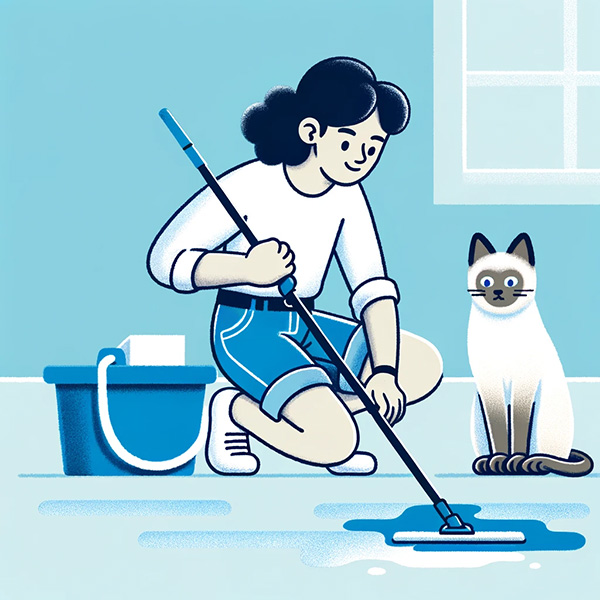
Enzyme Cleaner
Many cleaners are available on the market, but you need one specifically labeled as an "enzymatic cleaner" instead of a solvent-based cleaner. An enzymatic cleaner uses digestive enzymes to feed on the organic matter in the stain - feeding on the urine molecules. This removes them completely, both removing the cat pee odor and cat pee stains. Be sure to follow the directions on your particular enzyme cleaner because some will let the cleaner sit until it's dry, and others require you to blot away excess foam after a certain period.
If you don't have enzyme cleaners on hand, don't panic, you can create a DIY enzymatic cleaner using a mixture of water, hydrogen peroxide, and a few drops of dish soap. This might not be as potent as commercial enzymatic cleaners, but it could still help break down the urine compounds.
Clean Hard Surfaces With Soap
Hardwood floors tend to hold on to cat urine smells and cat urine stains much less than carpets and other soft surfaces, but it's still important to do more than simply wipe the pee up. Cat urine can eat through the finish on your floors, creating "stains" of a different sort and causing you to need to refinish your floors earlier than you might have expected!
Once you've blotted the cat urine, combine a tablespoon of dish soap with two cups of water (or opt for a preferred floor cleaner). Moisten a cloth or mop with this solution, and clean the surface. Finish by blotting the area with a fresh, clean cloth to ensure it's dry.
Baking Soda
Baking soda takes the crown in odor neutralization, conquering even potent scents like cat urine. Should the feline aroma persist despite enzyme cleaner treatment, generously apply baking soda to the afflicted area. This stalwart powder ensures a lasting odor elimination. Allow it to work its magic for a minimum of thirty minutes before vacuuming. If feasible, leaving it overnight yields optimal results!
Vinegar and Water
Vinegar boasts a reputation for its adeptness in odor elimination. Combine equal measures of white vinegar and water in a spray bottle. Before full application, assess the solution's impact on an inconspicuous area to avert any discoloration or harm. If deemed safe, directly apply the mixture to the afflicted region, allowing it to rest briefly. Employ a clean cloth or paper towel to gently blot the region, facilitating the absorption of both solution and scent. Vinegar's strong smell will fade as it dries.
Activated Charcoal
Activated charcoal is renowned for its skill in absorbing odors. If cat urine odor is trapped in confined spaces like closets, cabinets, or enclosures, replete a bowl or container with activated charcoal near the affected region. Activated charcoal can help absorb and neutralize the smell. Over time, the charcoal will absorb the odors from the air. This method is more about reducing the overall odor in the environment rather than directly treating the stain.
How to get rid of cat pee smell from carpet
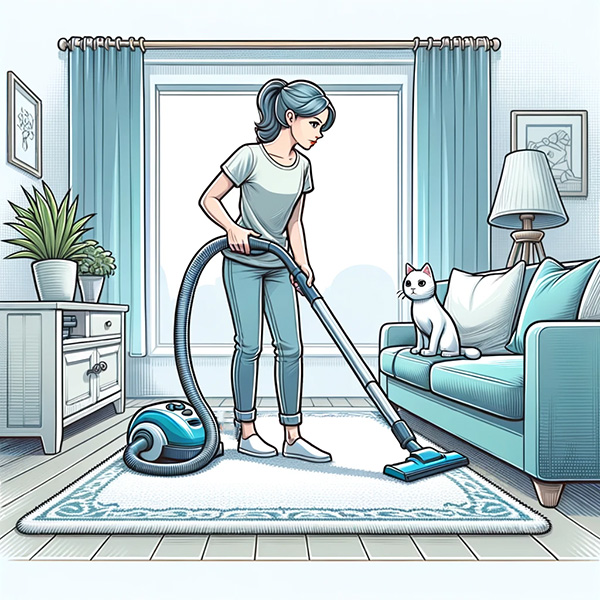
Eliminating the cat urine odor from the carpet may pose a challenge, yet with the correct strategy and patience, you can successfully banish the scent. Refrain from utilizing a steam cleaner, as the heat can exacerbate the cat pee smell. Here is a systematic guide to aid you in addressing this issue:
Prepare a Cleaning Solution: Combine an equal white vinegar and water ratio. Alternatively, opt for an enzymatic cleaner tailored to dismantle urine molecules. Prior to application, assess the solution's impact on a discreet carpet section to verify it doesn't harm the fibers or induce discoloration.
Apply the Solution: Gently pour the vinegar-water mixture or the cleaner directly onto the impacted region. Ensure thorough saturation, penetrating both the carpet fibers and the underlying padding. Allow the solution to rest for 10-15 minutes, affording it the opportunity to dismantle the urine compounds.
Blot Again: Once the solution has been given adequate time to take effect, utilize fresh paper towels or clean cloths to absorb the moisture. Apply firm pressure and repeat the process until the region is predominantly dry.
Rinse the Area: If you use a vinegar-water mixture, rinse the area with plain water to remove any remaining vinegar smell. Absorb any surplus moisture by gently blotting the area afterward.
Neutralize Odors: Generously apply baking soda onto the treated section. Delicately massage it into the carpet fibers using your fingers or a soft brush. Allow it to rest for several hours or overnight.
Vacuum: Once it has been given ample time to perform its task, diligently vacuum the treated area. This step is crucial in eliminating the baking soda as well as any lingering odor particles.
Repeat if Necessary: In some cases, especially if the urine has soaked deep into the carpet and padding, you might need to repeat the cleaning process a few times to eliminate the smell completely. If the odor persists, contact a professional carpet cleaning service.
How to Get Cat Pee Smell Out of a Mattress
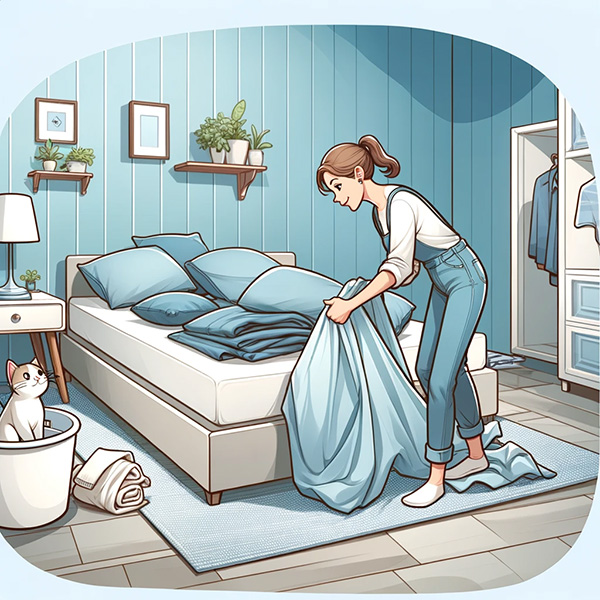
Remove Bedding: Strip the mattress of all bedding, including sheets, mattress protectors, and covers. Wash these items separately using an enzymatic cleaner designed to eliminate pet odors.
Prepare a Cleaning Solution: Combine white vinegar and water in equal proportions. Alternatively, opt for an enzymatic cleaner tailored to handle pet urine. Prioritize testing the solution on a discreet mattress spot to verify its compatibility, ensuring it doesn't harm the fabric or induce any discoloration.
Apply the Solution: Gently pour the vinegar-water mixture or cleaner onto the affected mattress area. Be careful not to oversaturate the mattress.
Blot and Air Dry: Use clean cloths to blot the treated area, pressing down gently to absorb excess moisture. Permit the mattress to air dry within a space that is well-ventilated naturally. Alternatively, you can elevate the mattress to facilitate air circulation around it.
Neutralize Odors: Generously distribute baking soda across the treated section of the mattress. With a gentle touch, massage it into the mattress fabric using your fingertips. Allow the baking soda to remain on the mattress for a span of several hours or, ideally, overnight. This duration enables it to absorb the lingering odors effectively.
Vacuum: Utilize a vacuum cleaner equipped with an upholstery attachment to extract the baking soda from the mattress meticulously.
Repeat if Necessary: The extent of the odor's intensity will determine whether you need to repeat the cleaning process multiple times to achieve complete odor elimination. Consider exposing the mattress to direct sunlight for several hours. Sunlight can help naturally disinfect and freshen the mattress. Fresh air also aids in removing odors.
How to Get Cat Urine Smell Out of Clothes and Linens
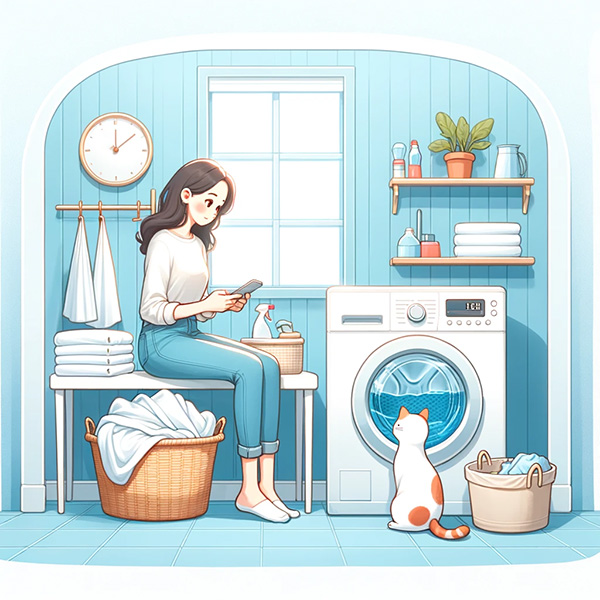
Dealing with cat urine smell on linens and clothing requires a slightly different approach than carpets or mattresses. Below is a comprehensive step-by-step guide to aid you in efficiently eliminating cat urine odor from your fabrics:
Remove Contaminated Items: Take off the affected clothing or linens immediately. If the items are still wet, shake off excess urine and blot with paper towels to absorb as much moisture as possible.
Rinse with Cold Water: Gently rinse the fabric under cold running water to expel as much of the urine as possible while refraining from utilizing hot water to prevent setting the stain and odor.
Pre-Treat with an Enzymatic Cleaner: Enzymatic cleaners are meticulously formulated to disintegrate the organic compounds within the urine, effectively eradicating both the stain and the odor. Adhere to the instructions provided on the product and apply the cleaner to the impacted area. Ensure thorough saturation of the stained region and let the cleaner rest on the fabric for the recommended time frame. This gives the enzymes enough time to break down the odor-causing compounds.
Wash as Usual: Follow the care instructions on the label and launder the clothing or linens in the washing machine. Opt for cold water and utilize an enzyme-based laundry detergent to augment the odor-eradicating procedure. Refrain from employing bleach or fabric softeners, as these substances can interact with the enzymes and compromise their efficacy. After washing, do a sniff test to check if the odor is completely gone. Repeat the enzymatic cleaning and washing process if you can still detect the smell.
Air Dry: If possible, air-dry the items in the sun. Sunlight can help naturally remove lingering odors. After air-drying, do another sniff test to eliminate the odor. If you're satisfied, you can fold or store the items as usual. The intensity of the odor will determine whether you need to repeat the procedure a few times to eliminate it fully.
How To Get Rid of Cat Pee Smell Out of Couch and Cushions
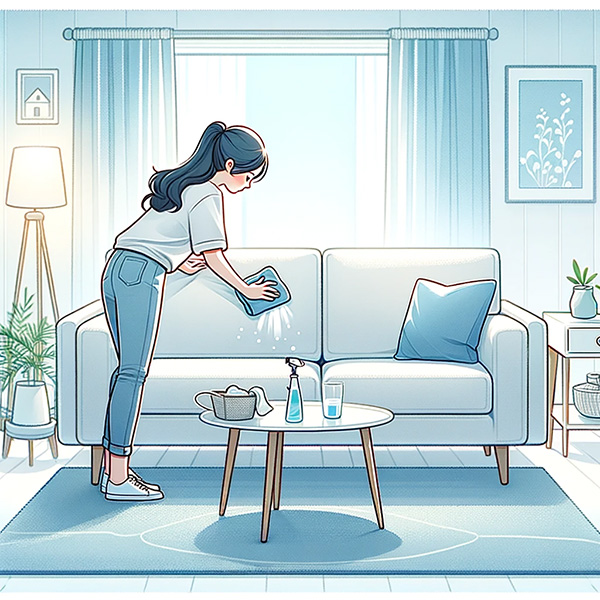
Remove Cushions: Carefully detach the cushions from the couch. This will allow you to clean each cushion individually and provide access to all affected couch areas.
Prepare a Cleaning Solution And Apply: Formulating a cleaning solution by combining equal portions of white vinegar and water can effectively counteract the urine odor. Alternatively, you can utilize a commercially available enzymatic cleaner explicitly tailored for pet odors.
Before applying either solution, it's advisable to perform a test on a hidden area to confirm that it won't cause any harm to the fabric. Using a spray bottle, generously apply the cleaning solution to the areas affected by the urine. Make sure the solution penetrates both the outer fabric and the interior filling of the cushions.
Blot and Air Dry: Use clean cloths to blot the treated areas after applying the solution. This helps absorb excess moisture and the cleaning solution. Allow the couch and cushions to air dry within a well-ventilated space naturally. Avoid exposing them to direct heat, which could set the stain and odor.
Neutralize Odors: Sprinkle baking soda over the treated areas, including the couch fabric and cushions. With a gentle touch, massage it into the fabric using your fingertips or a soft brush. Leave it undisturbed for several hours or overnight, giving it sufficient time to absorb odors effectively.
Vacuum And Sun Dry: Once the baking soda has been given the opportunity to take effect, use a vacuum cleaner equipped with an upholstery attachment to meticulously extract it from both the couch and cushions. This step helps eliminate both the powder and any trapped odor particles. Move the couch and cushions into direct sunlight for a few hours, if possible. Sunlight can help disinfect and naturally freshen the materials, assisting in odor removal.
Check for Odor: After cleaning, perform a thorough sniff test. You might need to repeat the process to ensure complete odor removal if you can still detect an odor. If the odor persists or if you're dealing with delicate or valuable furniture, consulting a professional upholstery cleaning service might be a wise option. They possess the knowledge and specialized tools necessary to manage stubborn odors proficiently.
How to get rid of cat pee smell from litter box
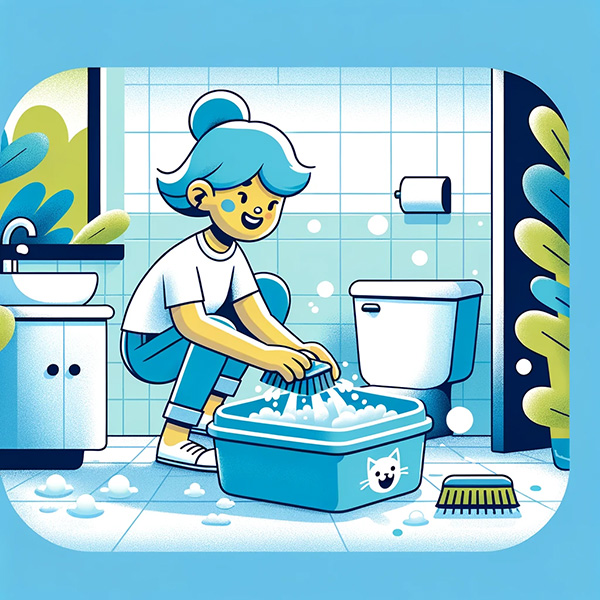
A clean litter box ensures your cat's comfort and maintains a fresh-smelling home. Here is how to effectively tackle the odor issue and deep clean each one of your litter boxes:
Empty the Litter Box: Carefully scoop out all the litter and waste into a trash bag. Dispose of it properly. If using a liner, remove and dispose of it as well.
Scrub the Box: Take the empty litter box outdoors if possible to avoid making a mess indoors. Rinse the box with water to remove loose debris. Create a solution by combining mild dish soap and water. Utilize a scrub brush or sponge to meticulously clean all the surfaces of the litter box. Focus particularly on corners and crevices where urine and residue tend to accumulate.
Rinse and Dry: Rinse the box thoroughly to remove any soap residue. Towel-dry the box or let it air dry in a well-ventilated area.
Disinfecting: For disinfection, you can use a solution of equal parts water and vinegar or water and hydrogen peroxide. Apply a gentle mist of the solution inside the box and allow it to rest for a few minutes. Rinse the box thoroughly again and allow it to dry.
Baking Soda Application: Once the box is fully dry, evenly scatter a layer of baking soda on the bottom before introducing new litter. This practice aids in neutralizing odors and maintaining a more pleasant scent within the box.
Clean Surrounding Area: Wipe the area around the litter box, as dust and litter particles can settle there and contribute to odor.
Wash Accessories: Wash any scoops, mats, or other accessories used with the litter box. These can also harbor odors and bacteria.
